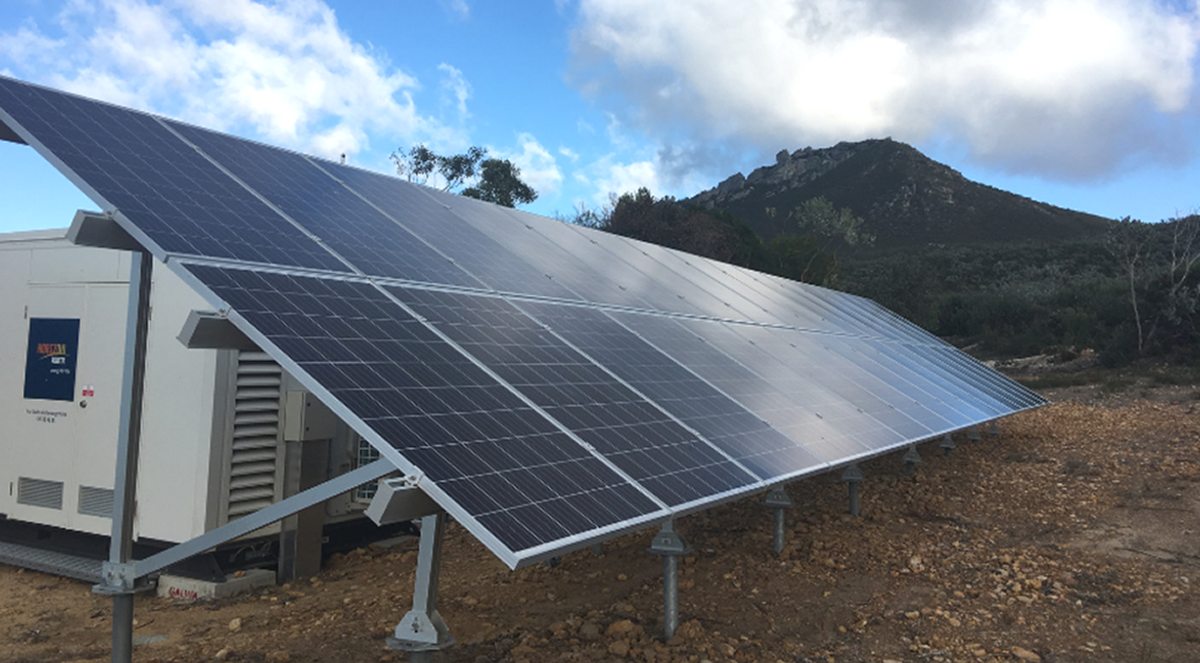
Image: Horizon Power
The bushfire crisis has some electricity distributors thinking more about utilising solar power and battery storage.
Electricity network infrastructure has copped a hammering in bushfire affected areas and according to this ABC report, the situation could result in higher electricity prices down the track for Australians in bushfire-prone areas due to rising insurance costs.
Energy Networks Australia (ENA), which represents electricity transmission and distribution networks across the country, has commented the situation has led to discussion regarding approaching electricity supply to bushfire-prone areas in a different way.
“Part of this risk debate we are having around the industry is should we continue to supply those customers by traditional poles and wires approaches, or should we start to adopt new technologies — solar, batteries, back-up generation,” said ENA chief executive Andrew Dillon.
The West Has Already Started
In Western Australia, long stretches of powerlines servicing small communities and single properties are threatened by severe weather and fires (or causing them). These “fringe-of-grid” areas are also subject to frequent blackouts. It’s not a good situation for anyone – end consumers have a crappy, dangerous power system and for the Distributed Network Service Provider (DNSP), it’s a money pit.
A few years ago, Western Power supplied six farms with off-grid systems incorporating solar panels, enough battery storage for two days’ supply and a backup generator for extended unfavourable conditions. The results of that trial found 92 per cent of the electricity consumed by the farms was generated by the solar panels and an average 65 hours of power outages were avoided.
The trial led to approval in 2018 for a demonstration project to install similar systems at up to 60 sites across the state. A related Horizon Power project last year involving 14 farms was to enable 54 kilometres of powerline infrastructure previously serving the properties to be decommissioned.
As well as providing safer, more reliable and better quality supply through the use of solar energy and battery storage, the arrangements have worked out to be cheaper as well.
Microgrids
But better bushfire resiliency in terms of energy safety and supply doesn’t have to mean going entirely off-grid. While it won’t stop poles and wires from burning through an unrelated fire, a way to help ensure electricity is still available when mains grid supply should be be cut during dangerous conditions (and better supply generally) is through the implementation of microgrids – small-scale power grids that can run independently or connected to the main electricity network.
One such project is Western Power’s Kalbarri Microgrid, which utilises battery storage combined with a local wind farm and small scale rooftop solar power systems to provide a higher quality electricity supply to a population of around 1,560. On Horizon Power’s side of things, it’s just recently finished up on a microgrid project in Onslow.
Outside WA, some communities are quite literally taking power into their own hands – an example is the small Victorian town of Yackandandah, which has set a goal of 100% renewable energy and achieving “energy sovereignty” by 2022.

 RSS - Posts
RSS - Posts



These are the types of solutions that should be implemented in places like India and Africa instead of Australia pushing more dirty coal into those countries.
Yes and get rid of Adani.
SPAusnet is in the process of replacing 150km of poles and wires to restore electricity to Mallacoota. Mallacoota has a population of 1000 people normally, and up to 10,000 in summer. Load-matching never looked so good for Solar! Surely the state government and SPAusnet can work on a better solution? I would suggest that the federal government assist as well, but I won’t hold my breath on that outcome.
The advent of ‘real-world disasters’ with strong indications of more to come, does seem to have prompted some re-action by transmission network owner Ausnet, which btw is largely foreign owned – 51% is held by Chinese and Singapore interests. See: https://en.wikipedia.org/wiki/AusNet_Services
But only at the fringes, and only because what was there before was destroyed.
The Chinese ownership does create some complications. Included among the shareholders is the State Grid Corporation of China, the sole operator and owner of the Chinese grid. So if anything major happens to that grid, of necessity the State Grid will have to give priority in its resource allocation to that, simply because of the vast number of people affected.
Partly because of geographic factors peculiar to Australia – eg. large Indian Ocean on one side, large South Pacific Ocean on the other, and nothing much between us and Antarctica to the south, ‘Climate Change’ will play out somewhat differently for us than in Europe.
The consensus of climate scientists is that – among the DEVELOPED Western countries, Australia is going to be the worst affected by climate change, and is also the country doing the least about preparing for it.